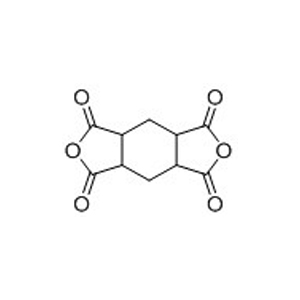Aure Chemical Delivers Excellence in HPMDA
1,2,4,5-Cyclohexanetetracarboxylic dianhydride (HPMDA, CAS 2754-41-8) is a cycloaliphatic dianhydride monomer used primarily in the synthesis of high-performance polyimides and polyesters, offering low color, excellent thermal and chemical resistance, high proton conductivity, and enhanced photoactivity.
Basic Information of HPMDA
| Product Name | 1,2,4,5-cyclohexanetetracarboxylic dianhydride |
|---|
| Abbreviation | HPMDA |
|---|
| CAS Number | 2754-41-8 |
|---|
| Molecular Formula | C10H8O6 |
|---|
| Molecular Weight | 224.17 g/mol |
|---|
| Appearance | White to almost white powder to crystal |
|---|
| Purity | ≥99% |
|---|
| Package | 1kg/bottle, 20kg/drum, or customized |
|---|
| Molecular formula |  |
|---|
Key Properties
Thermal Stability: Excellent, suitable for high-temperature resistant polymers (e.g., polyimides)
Solubility Advantage: Compared with aromatic dianhydrides, HPMDA-based polyimides offer better solubility in organic solvents
Moisture Absorption: Low, which contributes to dimensional stability of derived polymers
Mechanical Performance: When polymerized, imparts toughness and flexibility due to the alicyclic structure
Key Applications of HPMDA
Electronics and Microelectronics: Incorporated into low-color polyimide films for optical fiber claddings, microelectronics substrates, displays, and high-frequency components due to its transparency and dielectric properties.
Detailed COA / TDS / MSDS are available upon request. Please Contact Us for more information.

